25 Points: The Drowned World
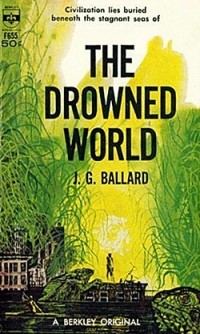 The Drowned World
The Drowned World
by J.G. Ballard
Berkley Books, 1962
208 pages / $23.95 buy from Amazon
1. “All the way down the creek, perched in the windows of the office blocks and department stores, the iguanas watched them go past, their hard frozen heads jerking stiffly. They launched themselves in the wake of the cutter, snapping at the insects dislodged from the air-weed and rotting logs, then swam through the windows and clambered up the staircases to their former vantage-points, piled three deep across each other.”
2. Freak extreme sunspot activity melts the polar ice-caps and reshapes the geography of earth. Humanity has migrated to the far north, and the cities of Europe are transformed into lagoons festering with lizards, mould, and ancient plant life. It’s the Triassic, part two.
3. The action focuses on two male biologists cataloguing new species in the lagoon that was once London, and a marooned heiress living in a half-flooded luxury apartment building. The biologists arrive with a military expedition charting the tributaries of the lagoon and surrounding islands. Despite the setting, it’s a boring premise, and it’s a relief when the main body of the expedition returns north.
4. Before the expedition leaves nearly everyone in the lagoon has started to dream about
a pulsing drum beat and “prehistoric sun”, which the biologists determine is a part of
“repressed” primordial memory, dating back to humankind’s earliest verterbrate
ancestors. #is is the main idea of the book. When I %rst got to this part I rolled my
eyes because it’s exactly that idea of “repressed primal drives” that I would expect was
trendy in the 60s and 70s (!e Drowned World was released in 1962). It reminded me
of the movie Wake In Fright, released in 1971, in which a prissy Australian schoolteacher
loses all of his money and basically gets his ass kicked by the Outback.
5. More things the idea of “repressed primal drives” reminded me of: “bogus ‘tribal’ art,”
“shag carpet,” “puma musk,” “gold medallions,” “whiskey,” “leopard print,” “snake
leather,” “open button-up shirts,” “Don Johnson’s alligator in Miami Vice,” “doing a lot
of cocaine,” “desperate misogyny.”
6. In Wake in Fright, the protagonist survives solely on the hospitality of strangers who
get him shitfaced and expect him to fire rifles while shitfaced. The movie is about a lot
of things, and it would be reductive to say otherwise, but contained within its premise
is the idea that there is a monstrous primal animal heart beating in the centre of
everyone. Wake in Fright handles this idea much better than The Drowned World: it’s
far more subtle, for one thing, which I think is partly due to the fact that it’s not
science fiction, although aside from its setting The Drowned World is not particularly
wild or exaggerated. And the Outback in Wake in Fright could almost pass for the
setting of a science fiction movie.
7. Wake in Fright’s excess is the result of despair or boredom whereas in The Drowned
World it is seen as a release or panacea.
8. As a title, !e Drowned World is almost too accurate, ultra-descriptive and relatively
bland, and the text doesn’t really exceed or challenge or stretch its boundaries. I don’t
think a work of fiction has ever delivered as well as The Drowned World does on the
implicit promises its title makes, and yet I’ve never been quite so disappointed. For a
post-apocalyptic wasteland, this was fairly standard fare, except perhaps for sections
like the passage I quoted in the first point.
9. “Drowned world,” “subconscious memories,” I get it, still boring.
10.Science fiction is, of course, always a better indicator of the time in which it is written
than that time’s future, but this book was too often derailed by its insistence on
remaining inside 1960s moral and social codes, as well as that time’s prejudices. This is
the main problem with The Drowned World. READ MORE >
June 13th, 2013 / 12:25 pm
25 Points: alphabet
 alphabet
alphabet
by Inger Christensen
New Directions, 2001
64 pages / $12.95 buy from Amazon
0. Inger Christensen—that petite, Danish demigod with her propensity for potted plants and the wild unknown—must have been hounded by the idea of growth. By what is massive. I guess if you look at/dwell on the vastness of things for long enough, you’ll predictably find yourself engaged with death options, the tempered dark where there are no underthings to stabilize you—and you are a little dust, alone with the chilling and the growing of yourself. It’s just you you you and the big outside.
1. Christensen’s alphabet is a sprawling network, shaped by the Fibonacci sequence that signifies nature’s inclination toward animal, exponential levels of growth and similar vanishings of decline. There’s an incantation stitching the poem, especially its beginning, that simply verifies the existence of things:
killers exist, and doves, and doves;
haze, dioxin, and days; days
exist, days and death; and poems
exist; poems, days, death
Death exists, details exist, the small monotony of days exist, all alongside one another.
1. I once read the entirety of alphabet in one of those concrete courtyards, the sad kind that’s trying to cute-up a hospital. I read it another time out loud for someone (although finishing was weird and uncomfortable because I was just beginning to tell, although I liked this person at the time, that they were not really interested in me and definitely not interested in 80-page metaphysical poems structured like the Fibonacci sequence), and another time on my bedroom floor with a whole .75 of OT that was looking nothing like a group sport because I was sad about something or something. And many times before and after that I can’t remember anymore. One magical person said, when I asked her about alphabet, that it made her think about cornfields a lot.
2. I sometimes try to relate my deep affection and appreciation for the state of Iowa, and I always think about cornfields that continue past the curvature of the earth, this massive output of production that literally exceeds our capacity to see it, much less understand it. “wheat in wheatfields exists, the head-spinning / horizontal knowledge of wheatfields, half-lives, / famine, and honey . . .”
3. Sometimes all it takes to be humbled is just the existence of certain things.
5. I’m shocked and quieted every time I read a newspaper, but not like I am by cornfields or incomprehensibly vast networks of connection. Although, the more I think about alphabet and re-live those declarations of both physical and metaphysical existences, the less I see the distinction.
8. There are some lines in there that simply state the death count for some great tragedies— “140,000 dead and / wounded in Hiroshima / some 60,000 dead and / wounded in Nagasaki”— and these numbers stand still on the page. The lines are always wavering between the porous and the immovable, the intimate and the intergalactic.
13. I wonder what it would look like, speaking of networks of connection, if Christensen had written a long poem/book of poems about the internet. Like, would that be beautiful? Would that be sheer terror?
21. It’s impossible not to talk about Susanna Nied’s translation. In an interview at Circumference last year, Neid said that she started working on alphabet’s translation in secret: “I didn’t tell Inger I was doing it. For the time being, I didn’t want anyone else’s input, not even hers. I had a very strong sense of what the poems could become in English. I kept shaping and reworking. Interlinked sprials. Double helix. Beauty and destruction. I was possessed.”
34. You can easily be possessed by Christensen. If you hear alphabet being read aloud, the words bend towards rapture, like hypnotism. Partly due to the steadily revolving repetitions—existence, vanishing, existence, vanishing. READ MORE >
June 11th, 2013 / 12:09 pm
25 Points: Taipei
 Taipei
Taipei
by Tao Lin
Vintage, 2013
256 pages / $14.95 buy from Amazon
1. “Paul dreamed something about his cube-shaped room being a storage facility in which he’d been placed by an entity that believed in his resale value.”
2. “He felt like he was trying to remove the surface of a glass bottle by pawing at it with oven mitts.”
3. “‘Nice,’ said Paul staring transfixed at Fran’s delicate and extreme gaze, like that of a skeleton with eyeballs, or a person with their face peeled off.”
4. “Daniel arrived with his friend Fran, 22, whose intriguing gaze, Paul noticed with interest, seemed both disbelieving and transfixed in discernment, as if meticulously studying what she knew she was hallucinating.”
5. “He awoke at night fifteen hours later and, while showering, felt like he lived in a module attached to a spaceship far enough from any star to never experience daylight.”
6. “The book party, like algae, feeling its way elsewhere, moved slowly but persistently from the bookstore’s basement to its first floor, to the sidewalk outside, converging finally with other groups at a corner bar…”
7. “There were times when his memory, like an external hard drive that had been taken from him and hidden inside an unwieldy series of cardboard boxes, or placed at the end of a long and dark and messy corridor…”
8. “Daniel was standing with limbs and neck uncoordinatedly extended, slightly striding in place–the pre-predatory stance of a chained thing that had broken free and didn’t yet know where to direct its vengeance, or what to do generally.”
9. “…watched the police car, or a police car, zoom past in the left lane, with emergency lights on and sirens off, quick and soundless as an apparition or the hologram of itself.”
10. “One the plane, after a cup of black coffee, Paul thought of Taipei as a fifth season, or ‘otherworld,’ outside, or in equal contrast with, his increasingly familiar and self-consciously repetitive life in America, where it seemed like the seasons, connecting in right angles, for some misguided reason, had formed a square, sarcastically framing nothing–or been melded, Paul vaguely imagined, about an hour later, facedown on his arms on his dining tray, into a door-knocker, which a child, after twenty to thirty knocks, no longer expecting an answer, has continued using, in a kind of daze, distracted by the pointlessness of his activity, looking absently elsewhere, unaware when he will abruptly, idly stop.” READ MORE >
June 6th, 2013 / 12:01 pm
25 Points: Regard (25 parentheticals)
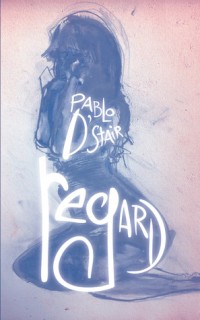 Regard
Regard
by Pablo D’Stair
KUBOA, 2013
280 pages / $7.50 buy from Amazon
1. (all of blue)
2. (having to dig it out of the soil at the base of one of the tree trunks)
3. (of what variety she couldn’t quite make out in the dim lighting)
4. (tipped out of its holder)
5. (transparent yellow with the appearance of bubbles throughout it)
6. (interested that the hole proceeded more straight down than she’d thought it was going to)
7. (she couldn’t seem to settle the question in her mind if this was the usual way of things)
8. (she leaned against not very often)
9. (like the man had in imitation of the dog)
10. (not loudly, but not self-consciously enough to be whispering) READ MORE >
June 4th, 2013 / 3:11 pm
25 Points: The Transmigration of Timothy Archer
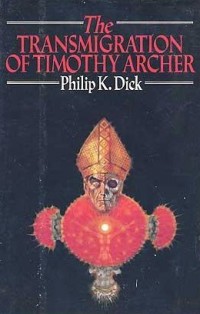 The Transmigration of Timothy Archer
The Transmigration of Timothy Archer
by Philip K. Dick
Mariner Books, 1982
256 pages / $13.95 buy from Amazon
1. If Phil Dick were a preacher, I think there would be a lot more interest in religion with his unique blend of fantasy, science fiction, philosophical speculation, ontological conundrums, and church history.
2. I bought the Transmigration of Timothy Archer at a bookstore called the Last Bookstore which gave me an ominous reminder of the apocalypse, or perhaps just the end of paperback books. When I studied the history of Christianity at Berkeley, I was surprised to find out that in the year 999, people were convinced the end of the world would come on 1000 and mass hysteria spread across the world. 1000 came and went and the world is still here.
3. The character of Bishop Timothy Archer is based on a real life American Episcopal bishop named James Pike who was friends with Philip K. Dick. Bishop Pike lived from 1913-1969 and led a huge congregation at the Grace Cathedral. He was a controversial figure who supported the ordination of women, racial desegregation, and the acceptance of LGBT people. He worked in support of civil rights and marched with Martin Luther King, Jr. during his march to Selma, Alabama. He was an alcoholic, had a romantic relationship with his secretary, and was brought up on heresy charges multiple times for questioning the virgin birth and the existence of Hell. He was never convicted.
4. The Transmigration of Timothy Archer is the third book in a trilogy that includes VALIS and the Divine Invasion. You don’t need to read the first two to understand this one, though it helps. This one also has no science fiction elements in contrast to the previous two.
5. The book starts with the death of John Lennon and is told through the perspective of Angel Archer who is the daughter-in-law of Timothy Archer. Timothy Archer is already dead and she is reflecting back on his life and the fact that he sought “what lies behind Jesus: the real truth. Had he been content with the phony, he would still be alive.” He begins to question the identity of Jesus after learning about the discovery of the Zadokite Scriptures, now known as the Damascus Scriptures. In those scriptures predating Christ by two centuries, there are references to sayings Jesus made, suggesting the message was not entirely original. It’s those implications that drive Archer on his quest.
6. To be more specific: “My point is that if the Logia predate Jesus by two hundred years, then the Gospels are suspect, and if the Gospels are suspect, we have no evidence that Jesus was God, very God, God Incarnate, and therefore the basis of our religion is gone. Jesus simply becomes a teacher representing a particular Jewish sect that ate and drank some kind of— well, whatever it was, the anokhi, and it made them immortal.”
7. Anokhi means Pure Self-Awareness and was eaten at the Messianic banquet. The Last Supper Jesus had with His disciples wasn’t just a sharing of bread and wine, but in a parallel with Zoroastrianism and Brahman, an assimilation and unification with God.
8. Timothy Archer refers to John Allegro, the official translator of the Qumran Scrolls, who posited a theory in his book The Sacred Mushroom and the Cross. That theory was that Jesus and His early disciples smoked mushrooms that gave them hallucinations and became the basis of their religion.
9. Jeff Archer, Bishop Archer’s son and Angel’s husband, has his own theories. He is particularly obsessed with the idea that “the ills of modern Europe” can be traced “back to the Thirty Years War which had devastated Germany, caused the collapse of the Holy Roman Empire, and culminated in the rise of Nazism and Hitler’s Third Reich.” A prominent figure in those times was the German general, Wallenstein, who “colluded with fate to bring on his own demise. This would be for the German Romantics the greatest sin of all, to collude with fate, fate regarded as doom.” Jeff Archer ends up committing suicide after he falls in love with the woman Timothy Archer is sleeping with.
10. Timothy Archer is sleeping with his secretary, Kirsten. READ MORE >
May 30th, 2013 / 12:18 pm
25 Points: The Tunnel
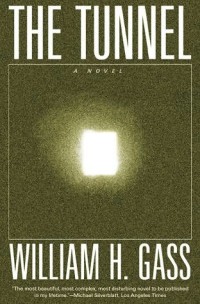 The Tunnel
The Tunnel
by William Gass
Dalkey Archive Press, 2007
652 pages / $15.95 buy from Dalkey Archive Press or Amazon
1. It took the man 26 years to write this thing. Let’s just get that out of the way now.
2. Semi-autobiographical, with an ornate use of language, penis obsessed, full of stupid limericks about horny nuns. It’s in the vein of Joyce and Pynchon but maybe not as annoying, not as smug–though maybe I’m wrong about that.
3. I did find the book unusually satisfying. Just sitting down and reading Gass’s prose out loud is really enjoyable: rhyming and alliteration are present at all points but Gass weaves the sounds into the thought and plot without being gratuitous. He does it joyously, gallopingly. He moves things along at a decent pace and lets you feel every increment.
4. The narrator William Kohler is a terrible person who you learn to love. He’s a fascist, misogynist, grumpy fat old fuck and you get to see inside his head and understand why he is all of these things. If you are the sort of person whose life can be changed by books this may change you so you can appreciate the shittiest people on this planet.
5. Plot is minimal. If anything “happens” it is the digging of the eponymous tunnel though that whole part is really pretty minor anyways. The majority of the book follows Kohler examining his childhood, his education, his marriage, family, coworkers and anger. Always the anger, the disappointment.
6. Kohler has two kids. Throughout the book he can only remember one of their names. Genius.
7. The descriptions are, without a doubt, beautiful. Candy, flowers, interiors, and people especially. Gass builds the characters up from thousands of scraps, always describing over and over, adding and sticking on and plugging holes. The characters come off as straddling an incredibly thin line between being fully developed and total caricatures. It works because we are inside Kohler’s head the whole time, and don’t you always caricature those you are forced to be around?
8. Degenerative sickness strikes a number of those around Kohler. Those he loves and hates. These depictions are gut wrenching and we get to see the characters before and during, before and during, before and during their declines. Seeing Kohler’s brilliant mentor go through sickness then back to health is particularly rough for we know that soon enough he will be back on the sick bed twitching and jerking. It’s like Gass gives them a reprieve just so he can suck them back through their crumbling one more time.
9. There is this depiction of academic life toward the beginning of the book which (though never having lived it myself) seems entirely appropriate: “Life in a Chair.” Kohler looks back and realizes he’s spent his entire life just sitting, reading, sometimes looking out a window. He never succumbs to sadness or regret, just puts it out as a solid fact and meditates on it to great length. This section should be read by anyone who wants to go into academia I think.
10. There are few people in Kohler’s life who are not totally insane. READ MORE >
May 28th, 2013 / 5:01 pm
25 Points: what purpose did i serve in your life
 what purpose did i serve in your life
what purpose did i serve in your life
by Marie Calloway
Tyrant Books, 2013
200 pages / $19.00 buy from Amazon or SPD
1. A link to Frank Hinton’s review from a few weeks ago.
2. Sex Writer Marie Calloway Addresses Dr. Phil Controversy Live
3. “I started to wonder, and felt relieved that there might be truth to the idea of intellectuals all being frauds. I knew that I certainly was.”
4. Some old links [TRIGGER WARNING: “journalism”]: 1, 2, 3, 4, 5, 6
5. I don’t know if Marie Calloway’s writing is unique, but I know I haven’t read anything like it. Have you?
6. “I wondered if maybe men are incapable of understanding something like this as anything other than something that’s meant to get them off.”
7. I’ve been thinking about how subjective the idea of “degradation” is, unless we’re talking about soil erosion or something.
8. 
9. I’d be curious to read a story that was “completely incomprehensible to men,” especially if Marie Calloway wrote it.
10. It’s funny how such clear, direct prose has resulted in so many people missing the point entirely. READ MORE >
May 26th, 2013 / 9:59 pm
25 Points: The Stud Book
 The Stud Book
The Stud Book
by Monica Drake
Hogarth, 2013
336 pages / $25.00 buy from Amazon
1. Monica Drake has written a compelling novel of manners.
2. The Stud Book follows a group of adult friends in Portland, Oregon (aka everyone living in America today) as they reconcile expectations with reality.
3. There is a zookeeper, a mortgage underwriter, a photographer, a yogi, and a computer repairman. Unsurprisingly, hilarity ensues.
4. Drake diffuses the novel’s many anticlimaxes (mishaps, muddled careers, domestic failings, generally unrealized ambitions) with a singular sense of humor.
5. The Stud Book is a book about motherhood. And the baby jokes crackle. A woman mistakenly licks a bit of dirty diaper from her shirt (not mustard!); another knocks an Oxycodone into an infant’s mouth. Drake exploits babies like the vulnerable little props they are.
6. Drug humor abounds as the friends imbibe in the manner of well-established stoner citizens. Justifying a “Volcano” vaporizer at a high school assembly one says, “I’ve got a chronic pain problem. This is totally legal.” Another drives high, she “ignoring the dosing instructions… nibbled pills all day long.” “She’d started to see the benefit: a military dose of Klonopin with red wine, dished out like a free lunch, would end the troubles in the Gaza Strip.” “Her car was speckled with pink, pale yellow, and white pill crumbs, Klonopin, diazepam, Vicodin.”
7. But beyond bad behavior, Drake finds a gentle humor in frailty.
8. On justifying the purchase of a derelict storefront, “Crack addicts curled in the recessed doorway and cans of OE8 littered the curb, but there was a Starbucks practically next door. Starbucks with their market research was an indicator the neighborhood was poised for an upswing.”
9. On Mrs. Cherryholmes, the beautiful but villainous school principal, “Her lipstick was frosted, too, in a sheen of confidence. That was probably the actual lipstick color: Administrative Confidence.”
10. One particularly funny and gruesome scene of self-love is a shoo-in for the annual bad sex in writing award, “He spit on his hand, cupped it and rubbed his damp palm over the head of the cock.” READ MORE >
May 14th, 2013 / 5:35 pm
25 Points: what purpose did i serve in your life
 what purpose did i serve in your life
what purpose did i serve in your life
by Marie Calloway
Tyrant Books, 2013
200 pages / $19.00 buy from Amazon or SPD
1. The film The Hurt Locker opens with the quote “The rush of battle is a potent and often lethal addiction, for war is a drug.”
2. Marie Calloway’s novel what purpose did i serve in your life opens with the quote “We teach children not to go into stranger’s houses, so why do it as an adult?”
3. The film The Hurt Locker is divided into a number of distinct scenes showcasing Sergeant First Class William James’ deactivating various bombs in intense, maverick ways. The viewer is left with the post-suspense of the diffusal, the slowing of blood-pressure lets one reflect on war as the hazmat is removed.
4. Marie Calloway’s what purpose did i serve in your life is divided into a number of distinct reflections each culminating in some kind of sex which she somehow coordinates in an often intense, maverick-y way. When being degraded, she posits that she deserves it. She states she feels relief and confusion in making herself an object.
5. The movie The Hurt Locker portrays James’ fearlessness in the face of danger and ends with his inability to escape the very thing that is destroying him.
6. Marie Calloway’s novel portrays a young woman moving through life after vaguely mentioned past traumas. She is a rape victim and this shapes her sexual actions and reactions. Though often being grossed-out or averse to a range of sexual suggestions (from being eaten-out to force-fed her own vomit) Calloway’s actions are that of a compliant, non-confrontational lover.
7. In 2011, Gawker called Marie ‘just a girl, with a Tumblr’.
8. In the Jeremy Lin chapter of the book, Lin points out:
“If someone says your writing has flaws or is good, that implies they know a concrete goal that your writing has, which can be measured in numbers, and that the number would be higher or lower if you changed your writing in a certain way, I feel, by that seems incredibly hard to measure, even if two different people had agreed upon a purpose for your writing that could be measured, like ‘increases heart rate in reader’ or something. But it can be depressing to never think in terms of ‘good’/’bad’ without defining contexts/goals in each instance.”
9. A staff member of the Paris Review once told William S. Burroughs that sex seems frequently equated with death in his writing. Burroughs responded:
“That is an extension of the idea of sex as a biologic weapon. I feel that sex, like practically every other human manifestation, has been degraded for control purposes, or really for antihuman purposes. This whole Puritanism. How are we ever going to find out anything about sex scientifically, when a priori the subject cannot even be investigated? It can’t even be thought about or written about. That was one of the interesting things about Reich. He was one of the few people who ever tried to investigate sex—sexual phenomena, from a scientific point of view. There’s this prurience and this fear of sex. We know nothing about sex. What is it? Why is it pleasurable? What is pleasure? Relief from tension? Well, possibly.”
10 a. “If you like me, you have to like shyness.”
b. “I’m smart at some things but not with people or at growing up.” READ MORE >
May 9th, 2013 / 12:26 pm
25 Points: Solip
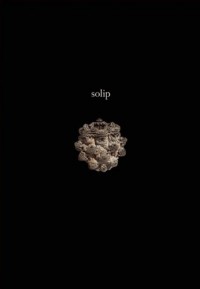 Solip
Solip
by Ken Baumann
Tyrant Books, 2013
200 pages / $14.95 buy from Amazon or SPD
1. Solip isn’t a novel.
2. If you’re looking for plot, look elsewhere.
3. This might be the single most difficult book to write jacket copy for.
4. This isn’t experimental literature for the sake of experimenting.
5. The book is physically tiny and the front cover is minimalist.
6. There is nothing on the back cover. A wall of black staring at you. No pull quotes or blurbs, and by the second page you realize why: because the book speaks for itself.
7. I read this tiny book in one sitting in a coffee shop amazed by its power and had to go indoors to drown out the outside world to reread it and devour it properly.
8. Baumann’s writing demands your attention. It’s as if he’s bottled up the intensity present in much of online fiction and spread it out over a longer narrative, not losing a beat in the process.
9. The sentences are divine. The language will cast shadows. They will hum to you. Listen closely.
10. The book has a pulse to it, a pulse that beats louder and more pervasively as the text unfolds. READ MORE >
May 7th, 2013 / 3:01 pm
